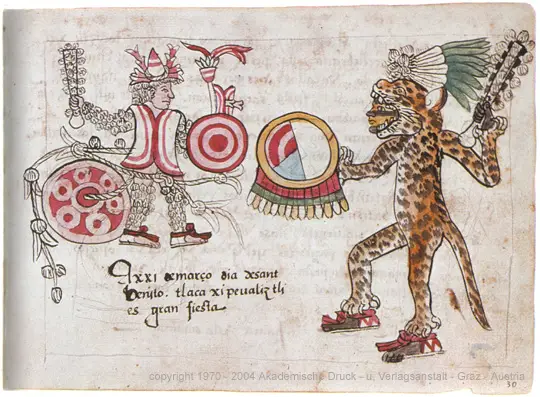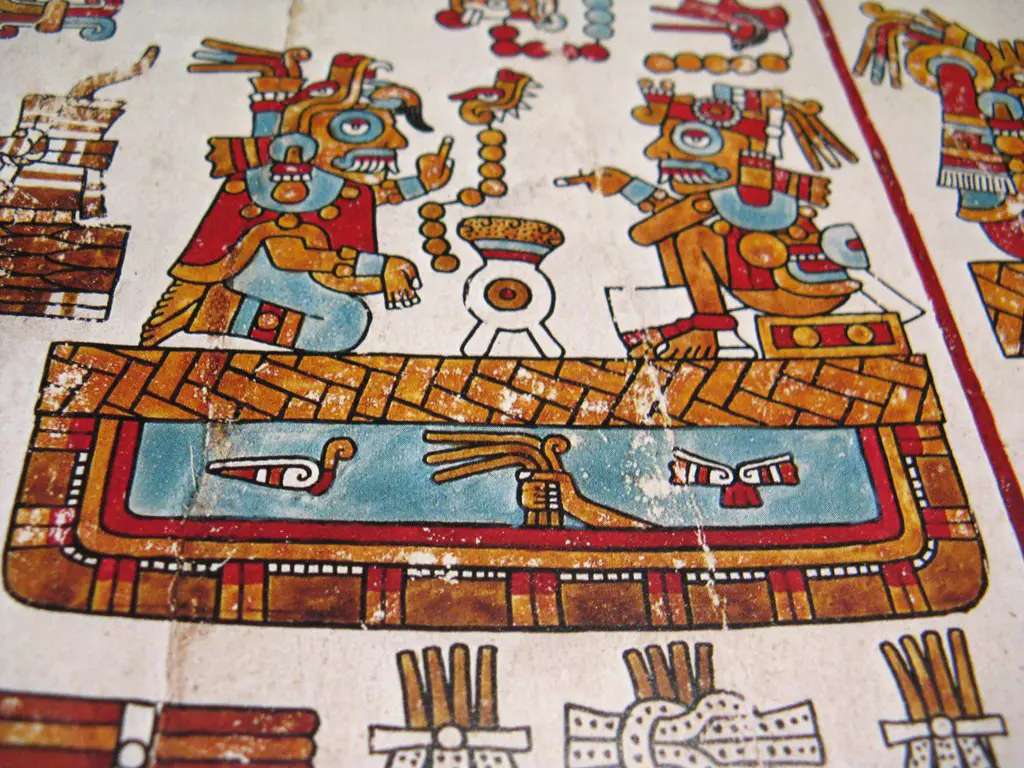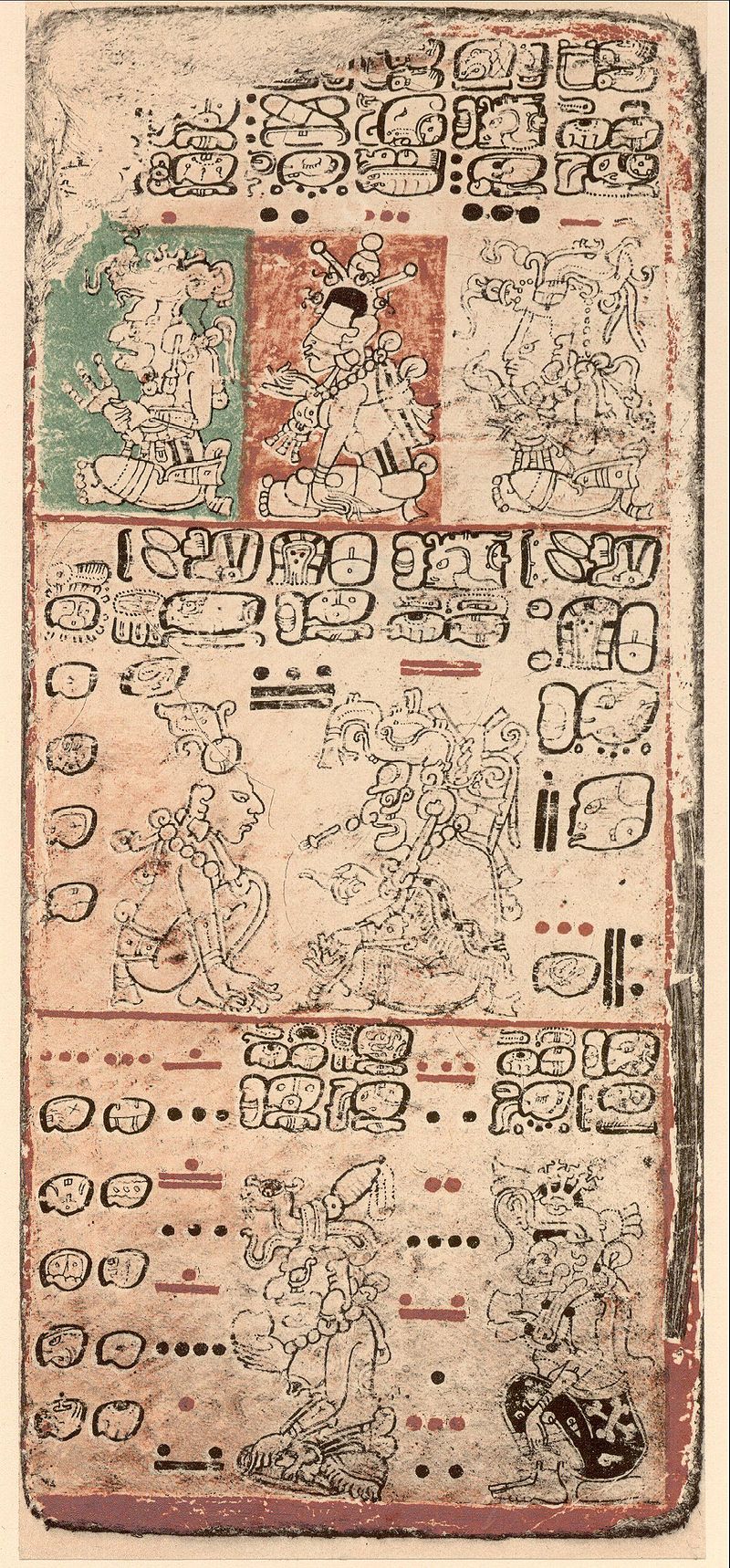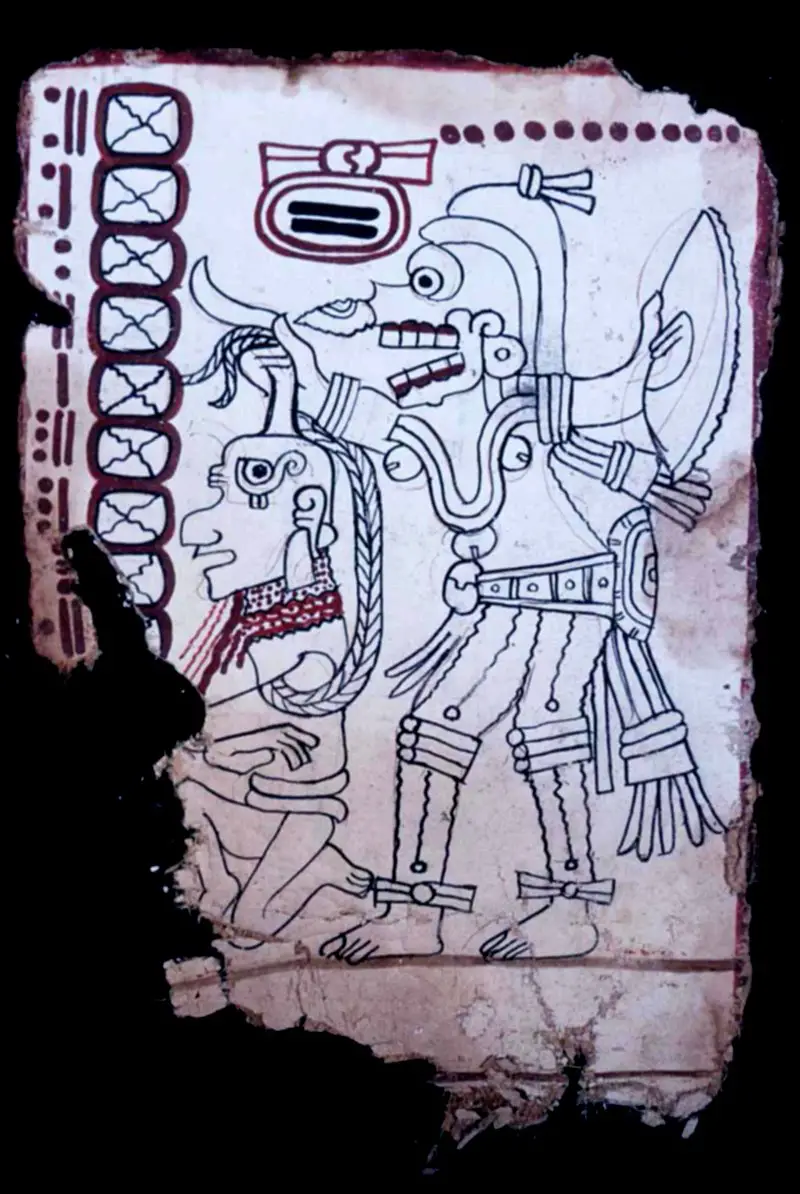Podcast: Play in new window | Download
Subscribe: Apple Podcasts | RSS
 It was a cold day in Florence, the cradle of the Renaissance. The year was 1698. Antonio Magliabechi received a gentle tap at his front door. The eccentric book collector had a little window on his front door, which was unusual at the time, because he wanted to see who was coming first and then decide whether or not to answer the door. On this day, Signore Magliabechi opened the door quite enthusiastically as the person on the other side came bearing him an exquisite gift. Magliabechi was the official librarian to the ruler of Florence, Cosimo de’ Medici, and while not tending to Grand Duke Cosimo’s book collection, he maintained a vast library of his own. In Magliabechi’s private home he had over 40,000 books and 10,000 manuscripts, but he had never seen nor held in his hands what the visitor brought to him that day. It was a 92-page book dating back 150 years, created in the New World. The royal librarian shook with excitement as he perused the pages. He didn’t know what to make of this work, but it would perhaps come to be the most unusual item in his entire collection. He could make out some of the scribblings throughout the book written in Spanish, but Magliabechi wondered what the wonderful illustrations meant. There were pages of icons of animal heads: jaguars, rabbits, deer, and so one. This, followed by elaborately decorated human figures. The book that showed up at Magliabechi’s front door that day would later bear his name and is known today as the Codex Magliabechiano. Scholars know now that the rare book, created by Aztec scribes on European paper sometime around 1540 in the first decades after the Conquest, is primarily a religious document. It is most likely based on a much older work dating back to a time before the Spanish, like so many other manuscripts from ancient Mexico that survive to this day. When Magliabechi died in 1714 at the age of 81, he bequeathed his entire collection to the Grand Duke of Florence. The Grand Duke decided to turn Magliabechi’s very home into a library to keep the massive hoard intact. In 1861, Italy’s King Victor Emmanuel the Second combined Magliabechi’s tens of thousands of books and manuscripts with the private library of the Grand Duke of Florence to form the Biblioteca Nazionale Centrale Firenze, or in English, the National Central Library of Florence. The Mexican codex calls this Italian library its home to this day.
It was a cold day in Florence, the cradle of the Renaissance. The year was 1698. Antonio Magliabechi received a gentle tap at his front door. The eccentric book collector had a little window on his front door, which was unusual at the time, because he wanted to see who was coming first and then decide whether or not to answer the door. On this day, Signore Magliabechi opened the door quite enthusiastically as the person on the other side came bearing him an exquisite gift. Magliabechi was the official librarian to the ruler of Florence, Cosimo de’ Medici, and while not tending to Grand Duke Cosimo’s book collection, he maintained a vast library of his own. In Magliabechi’s private home he had over 40,000 books and 10,000 manuscripts, but he had never seen nor held in his hands what the visitor brought to him that day. It was a 92-page book dating back 150 years, created in the New World. The royal librarian shook with excitement as he perused the pages. He didn’t know what to make of this work, but it would perhaps come to be the most unusual item in his entire collection. He could make out some of the scribblings throughout the book written in Spanish, but Magliabechi wondered what the wonderful illustrations meant. There were pages of icons of animal heads: jaguars, rabbits, deer, and so one. This, followed by elaborately decorated human figures. The book that showed up at Magliabechi’s front door that day would later bear his name and is known today as the Codex Magliabechiano. Scholars know now that the rare book, created by Aztec scribes on European paper sometime around 1540 in the first decades after the Conquest, is primarily a religious document. It is most likely based on a much older work dating back to a time before the Spanish, like so many other manuscripts from ancient Mexico that survive to this day. When Magliabechi died in 1714 at the age of 81, he bequeathed his entire collection to the Grand Duke of Florence. The Grand Duke decided to turn Magliabechi’s very home into a library to keep the massive hoard intact. In 1861, Italy’s King Victor Emmanuel the Second combined Magliabechi’s tens of thousands of books and manuscripts with the private library of the Grand Duke of Florence to form the Biblioteca Nazionale Centrale Firenze, or in English, the National Central Library of Florence. The Mexican codex calls this Italian library its home to this day.
 What exactly is a codex? As defined by Britannica online, a codex is, “a manuscript book, especially of scripture, early literature or ancient mythological or historical annals.” In the Mexican context, codices are classified four ways. First, there is time of manufacture. Mexican codices are considered either pre-Hispanic or Colonial. Out of the hundreds of Mexican codices still in existence, only 15 can be authenticated as being created before the arrival of the Spanish. Many of the manuscripts created in the early Colonial period were based on older pre-contact documents, but those documents are lost. Second, Mexican codices are classified according to culture. A codex can either be Aztec, Mixtec or Maya. The overwhelming number of codices surviving to this day are Aztec-produced. Third, codices are also classified according to format. Some are like accordions and fold out. Others are in scroll form. Some are flat, comprised of loose sheets. Others are bound like modern-day books. The fourth and last type of classification for Mexican codices is according to material used. Many manuscripts were made from amate bark paper called amatl by the Aztecs. The bark from fig trees was ground up into a paste and then flattened out to dry into sheets of paper. A codex could also be made from cloth, animal skins or in later times, European paper. The most ancient codices were probably made of cotton or maguey fibers, but as this practice dates back close to two thousand years, no early books from that time period survive to this day. As a curious aside, most Mexican codices are presently located outside of Mexico. 180 of these ancient books alone are in the National Library of France in Paris. Many are in the hands of private collectors. Of course, no one knows just how many of these uniquely Mexican manuscripts can be found in the recesses of the famous Vatican Library. Perhaps church officials do not even know the number.
What exactly is a codex? As defined by Britannica online, a codex is, “a manuscript book, especially of scripture, early literature or ancient mythological or historical annals.” In the Mexican context, codices are classified four ways. First, there is time of manufacture. Mexican codices are considered either pre-Hispanic or Colonial. Out of the hundreds of Mexican codices still in existence, only 15 can be authenticated as being created before the arrival of the Spanish. Many of the manuscripts created in the early Colonial period were based on older pre-contact documents, but those documents are lost. Second, Mexican codices are classified according to culture. A codex can either be Aztec, Mixtec or Maya. The overwhelming number of codices surviving to this day are Aztec-produced. Third, codices are also classified according to format. Some are like accordions and fold out. Others are in scroll form. Some are flat, comprised of loose sheets. Others are bound like modern-day books. The fourth and last type of classification for Mexican codices is according to material used. Many manuscripts were made from amate bark paper called amatl by the Aztecs. The bark from fig trees was ground up into a paste and then flattened out to dry into sheets of paper. A codex could also be made from cloth, animal skins or in later times, European paper. The most ancient codices were probably made of cotton or maguey fibers, but as this practice dates back close to two thousand years, no early books from that time period survive to this day. As a curious aside, most Mexican codices are presently located outside of Mexico. 180 of these ancient books alone are in the National Library of France in Paris. Many are in the hands of private collectors. Of course, no one knows just how many of these uniquely Mexican manuscripts can be found in the recesses of the famous Vatican Library. Perhaps church officials do not even know the number.
 As mentioned before, the vast majority of ancient Mexican codices are Aztec in origin with few dating back to the time before the Spanish. Most of the Aztec books are made up of pictograms and images. The pre-conquest Aztecs did not have a sophisticated writing system like the ancient Maya, but many of the images in the books had meaning so that the way they were arranged told a story recognizable to anyone. Along with the illustrations, the codices of the colonial period include text written with the Latin alphabet in either Spanish or Classical Nahuatl, the language of the Aztec Empire. Nahuatl was considered an official language alongside Spanish throughout New Spain during various times during the colonial period, so it was not uncommon to find documents from this time written in that widely used indigenous language. Aztec scribes were called tlacuilos, which comes from the Nahuatl word, tlacuiloa, which means, “to write through painting.” Although many professions in the Aztec world were reserved exclusively for men, many of the ancient codex scribes were women. Before the Spanish arrived, the codices were generally produced for the exclusive use of the members of the nobility and priestly class. Aztec codices covered many topics. They detailed religious observances and rituals, described things connected with the calendar systems, delineated genealogies and royal histories, and chronicled important events. Many codices were land or tax records, which may seem boring to some but offer valuable insights on Aztec life to researchers. In the Aztec world there were libraries of books maintained by the priests or ruling families. A library was called an amoxcalli, which combines two Nahuatl words, “amox,” meaning book, and “calli,” meaning “house.” The largest amoxcalli in the Aztec Empire was in the royal palace of the Kingdom of Texcoco, a subject state on the eastern shores of the lake of the same name. The wealthy rulers of Texcoco were known as poets and patrons of the arts. Early Spanish accounts tell of a library at Texcoco full of thousands of books and manuscripts from all over the Aztec Empire and beyond, an ancient Mexican equivalent of the Great Library of Alexandria. Curiously, there is absolutely no mention of this library or its contents found in any written records after the Spanish Conquest. What happened to the great library at the Texcoco palace is anyone’s guess. For more information about the Kingdom of Texcoco, please see Mexico Unexplained Episode #133. https://mexicounexplained.com//the-tragic-history-of-the-house-of-texcoco/
As mentioned before, the vast majority of ancient Mexican codices are Aztec in origin with few dating back to the time before the Spanish. Most of the Aztec books are made up of pictograms and images. The pre-conquest Aztecs did not have a sophisticated writing system like the ancient Maya, but many of the images in the books had meaning so that the way they were arranged told a story recognizable to anyone. Along with the illustrations, the codices of the colonial period include text written with the Latin alphabet in either Spanish or Classical Nahuatl, the language of the Aztec Empire. Nahuatl was considered an official language alongside Spanish throughout New Spain during various times during the colonial period, so it was not uncommon to find documents from this time written in that widely used indigenous language. Aztec scribes were called tlacuilos, which comes from the Nahuatl word, tlacuiloa, which means, “to write through painting.” Although many professions in the Aztec world were reserved exclusively for men, many of the ancient codex scribes were women. Before the Spanish arrived, the codices were generally produced for the exclusive use of the members of the nobility and priestly class. Aztec codices covered many topics. They detailed religious observances and rituals, described things connected with the calendar systems, delineated genealogies and royal histories, and chronicled important events. Many codices were land or tax records, which may seem boring to some but offer valuable insights on Aztec life to researchers. In the Aztec world there were libraries of books maintained by the priests or ruling families. A library was called an amoxcalli, which combines two Nahuatl words, “amox,” meaning book, and “calli,” meaning “house.” The largest amoxcalli in the Aztec Empire was in the royal palace of the Kingdom of Texcoco, a subject state on the eastern shores of the lake of the same name. The wealthy rulers of Texcoco were known as poets and patrons of the arts. Early Spanish accounts tell of a library at Texcoco full of thousands of books and manuscripts from all over the Aztec Empire and beyond, an ancient Mexican equivalent of the Great Library of Alexandria. Curiously, there is absolutely no mention of this library or its contents found in any written records after the Spanish Conquest. What happened to the great library at the Texcoco palace is anyone’s guess. For more information about the Kingdom of Texcoco, please see Mexico Unexplained Episode #133. https://mexicounexplained.com//the-tragic-history-of-the-house-of-texcoco/
The often-overlooked Mixtec people who lived in the lands now comprising the modern Mexican states of Oaxaca, Puebla and Guerrero, also had a codex tradition. The Mixtecs were one of the few civilizations in ancient Mexico to develop a writing system. They didn’t have an alphabet, but their writing system was more logographic in that their characters and pictures represented complete ideas or words, rather than sounds and syllables. One did not necessarily need to know the Mixtec language in order to “read” the codices written by Mixtec scribes. Like the Aztecs, the Mixtecs chronicled the lives of their rulers, they wrote down heavenly observations, described festivals and rituals, and compiled bureaucratic records having to do with taxation and land ownership. All Mixtec codices that survive are on deer hide with much of the vibrant colors still very much alive many centuries later. Two of these codices – the Vienna Codex and the Codex Zouche-Nuttall – date to the mid-or late 1300s, over 150 years before the Spanish Conquest and long before the Mixtecs saw encroachment on their lands by the Aztec Empire. Only one known Mixtec codex is in Mexico, all the others are in European libraries and private collections. The Codex Colombino is housed in the National Museum of Anthropology and History in Mexico City. The deerskin book mostly focuses on the noble life and family history of a Mixtec ruler known as Eight Deer Jaguar Claw, who lorded over the Valley of Oaxaca in the 11th Century. The codex itself is does not date back to the 11th Century, but was created a few hundred years later.
 The Maya perhaps get the most attention of all the ancient codex makers for a variety of reasons. For one, there are only 4 confirmed Maya codices in existence with many forgeries and frauds going on and off the short list over the years. Also, many ancient Maya books were destroyed in a very abrupt way by the early church fathers and that seems to make even the most disinterested layperson take notice. For more information about the Great Maya Book Burning of 1562, please see Mexico Unexplained Episode #106. https://mexicounexplained.com//great-maya-book-burning/ The Maya codices were all made from a bark paper called huun, whose technique was perfected sometime in the 5th Century AD. Codex makers had two different names in Maya, ah ts’ib, literally, “scribe,” and ah woh, which meant, simply, “painter.” As was the case in other parts of Mesoamerica, the Maya codices belonged to the realms of the rulers and the priests. In the codices that exist the Maya authors wrote about the zodiac, celestial events such as eclipses and phases of the planet Venus, horoscopes and other predictions, along with stories of the gods. The four Maya bark-paper books still in existence are the Dresden Codex, the Paris Codex, the Madrid Codex and the Grolier Codex. The most controversial and the most recently discovered codex on this list is the last one mentioned, the Grolier Codex. In 1965, a Mexican antiquities collector, Dr. Josué Sáenz, was approached by two men who told him they could take him to view recently discovered ancient Maya artifacts that were available for purchase. Dr. Sáenz agreed and the men took him to a small airstrip outside of Tortuguero in the Mexican state of Tabasco. The book was supposedly found inside a wooden box in a cave across the border in the mountains of Chiapas. Sáenz bought the codex and later tried to get it authenticated. It was immediately dismissed as a fake by about half the leading Maya scholars. Radio-carbon testing taken once in 1972 and again in 2012 yielded dates placing the codex’s creation somewhere between the 11th and 12th Centuries. By 2018, after years of scientific scrutiny and testing, the National Institute of Anthropology and History in Mexico City declared the Grolier Codex to be authentic. The institute explained that the book was made somewhere between 1021 and 1154 AD thus making it the oldest surviving codex in Mexico and the oldest known book in the Americas.
The Maya perhaps get the most attention of all the ancient codex makers for a variety of reasons. For one, there are only 4 confirmed Maya codices in existence with many forgeries and frauds going on and off the short list over the years. Also, many ancient Maya books were destroyed in a very abrupt way by the early church fathers and that seems to make even the most disinterested layperson take notice. For more information about the Great Maya Book Burning of 1562, please see Mexico Unexplained Episode #106. https://mexicounexplained.com//great-maya-book-burning/ The Maya codices were all made from a bark paper called huun, whose technique was perfected sometime in the 5th Century AD. Codex makers had two different names in Maya, ah ts’ib, literally, “scribe,” and ah woh, which meant, simply, “painter.” As was the case in other parts of Mesoamerica, the Maya codices belonged to the realms of the rulers and the priests. In the codices that exist the Maya authors wrote about the zodiac, celestial events such as eclipses and phases of the planet Venus, horoscopes and other predictions, along with stories of the gods. The four Maya bark-paper books still in existence are the Dresden Codex, the Paris Codex, the Madrid Codex and the Grolier Codex. The most controversial and the most recently discovered codex on this list is the last one mentioned, the Grolier Codex. In 1965, a Mexican antiquities collector, Dr. Josué Sáenz, was approached by two men who told him they could take him to view recently discovered ancient Maya artifacts that were available for purchase. Dr. Sáenz agreed and the men took him to a small airstrip outside of Tortuguero in the Mexican state of Tabasco. The book was supposedly found inside a wooden box in a cave across the border in the mountains of Chiapas. Sáenz bought the codex and later tried to get it authenticated. It was immediately dismissed as a fake by about half the leading Maya scholars. Radio-carbon testing taken once in 1972 and again in 2012 yielded dates placing the codex’s creation somewhere between the 11th and 12th Centuries. By 2018, after years of scientific scrutiny and testing, the National Institute of Anthropology and History in Mexico City declared the Grolier Codex to be authentic. The institute explained that the book was made somewhere between 1021 and 1154 AD thus making it the oldest surviving codex in Mexico and the oldest known book in the Americas.
The final chapter is not yet written in the ancient Mexican codex saga. Since the 1990s there have been a handful of what archaeologists believe are Maya codices discovered at archaeological sites. These suspected codices are lumps of plaster accompanied by flecks of paint with most of the organic material rotted away. They are nonetheless being preserved for some point in the future when the technology may exist to open them up and possibly view their contents. As the world of Maya archaeology is ever-changing and new discoveries happen on a weekly basis, it wouldn’t be surprising if a new codex might suddenly appear to delight the world as the scribes had intended hundreds of years before.
REFERENCES
Britannica Online
Coe, Michael D. Breaking the Maya Code. New York and London: Thames and Hudson, 1992. We are Amazon Affiliates. Buy the book on Amazon here: https://amzn.to/3iPHabw
Coe, Michael D. The Maya. New York and London: Thames and Hudscon, 1999. We are Amazon Affiliates. Buy the book on Amazon here: https://amzn.to/3fWOIrm
Gibson, Charles. “Published Collections of Documents Relating to Middle American Ethnohistory”, article 11.Guide to Ethnohistorical Sources Part 2; Handbook of Middle American Indians. University of Texas Press 1973, pp. 3–41
